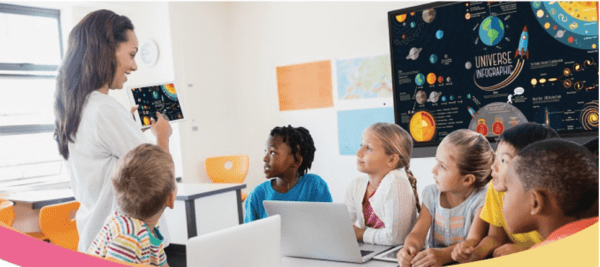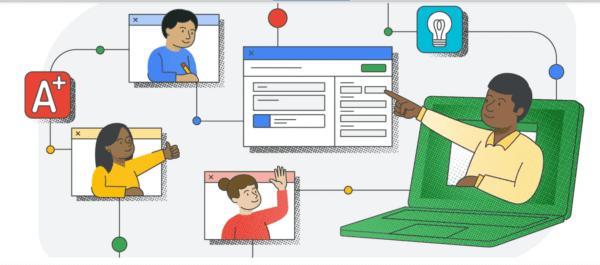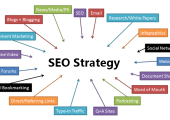EdTech integration has revolutionized the way students learn, and teachers teach. The use of technology in the classroom has become increasingly prevalent in the modern era, and teachers need to be equipped with the necessary skills to integrate it effectively into their teaching methods. Integrating EdTech can empower teachers to create engaging and interactive learning environments that foster student collaboration and critical thinking.
The Role of EdTech in Modern Education is to give students access to a wide range of resources and tools to help them learn more effectively. EdTech can help teachers create personalized learning experiences that cater to the needs of individual students. It can also help teachers track student progress and identify areas where students may struggle, allowing them to provide targeted support. EdTech can also help students develop essential digital literacy skills that are increasingly important in today’s world.
Strategies for Effective EdTech Integration include providing teachers with professional development opportunities that help them develop the skills necessary to integrate technology into their teaching methods. It is also essential to provide teachers with access to high-quality resources and tools that can help them create engaging and interactive learning experiences. Effective EdTech integration requires careful planning and implementation, and it is essential to involve all stakeholders in the process to ensure its success.

Key Takeaways
- EdTech integration is essential for empowering teachers to create engaging and interactive learning environments that foster student collaboration and critical thinking.
- The role of EdTech in modern education is to provide students with access to a wide range of resources and tools that can help them learn more effectively.
- Strategies for effective EdTech integration include providing teachers with professional development opportunities, access to high-quality resources and tools, and involving all stakeholders in the planning and implementation process.
The Role of EdTech in Modern Education
As technology evolves, it has become increasingly clear that EdTech plays a vital role in modern education. While technology integration in education is not a new concept, the use of EdTech has transformed the landscape of contemporary education in numerous ways. Here are two ways EdTech empowers teachers and enhances student learning.
Enhancing Teaching and Learning
EdTech tools and platforms are revolutionizing how teachers teach and how students learn. By leveraging various multimedia elements such as videos, simulations, and virtual reality, EdTech has revolutionized how students engage with learning materials. EdTech has also transformed how teachers deliver content, making it more interactive and engaging. With EdTech, teachers can create personalized learning experiences that cater to the unique needs of each student.

Supporting Educator’s Professional Development
EdTech is also vital in supporting educators’ professional development. It provides teachers with many resources and tools to improve their teaching practices. EdTech tools such as webinars, online courses, and professional learning communities offer teachers new opportunities to learn and grow. By using EdTech, teachers can stay updated with the latest pedagogical practices and innovations in teaching and learning.
EdTech has become an integral part of modern education. It empowers teachers by enhancing teaching and learning and supporting their professional development. With the continued integration of EdTech in classrooms, we can expect to see even more innovation in pedagogy and student learning.
Strategies for Effective EdTech Integration
Empowering teachers to integrate EdTech tools into their curriculum effectively is essential for enhancing student learning outcomes. Here are some strategies to consider:

Curriculum Alignment and EdTech Tools
One key to successful EdTech integration is aligning the technology with your curriculum. This means selecting EdTech tools that support your learning objectives and are relevant to your teaching content. Consider whether the tool will help students achieve the learning outcomes you have set and enhance their understanding of the content.
To ensure that the EdTech tools are aligned with your curriculum, it’s essential to clearly understand your learning objectives and communicate these objectives to your students. Use the EdTech tools to support and enhance your teaching rather than relying on them as a replacement for traditional instruction.
Data-Driven Instruction and Feedback
Another effective strategy for integrating EdTech is to use data to guide instruction and provide student feedback. EdTech tools can help you collect data on student performance, which you can use to identify areas where students may be struggling and adjust your instruction accordingly.
Use EdTech tools to provide students with immediate feedback on their performance. This can help them understand where to improve and motivate them to continue learning. Provide specific, actionable feedback that is focused on the learning objectives.
A framework incorporating curriculum alignment, data-driven instruction, and feedback can enhance your instruction and help your students achieve better learning outcomes.

Fostering Collaboration and Engagement
Integrating educational technology (EdTech) into the classroom can help transform the learning experience for both teachers and students. Teachers can create interactive and adaptive learning environments that foster student collaboration and engagement by leveraging digital tools.
Building Learning Communities
One critical benefit of integrating EdTech is building learning communities within the classroom. Teachers can facilitate student communication and collaboration through collaborative platforms and tools like Google Classroom or Microsoft Teams. This creates a sense of community and enhances engagement and participation.
In addition, EdTech can also help teachers create a more inclusive learning environment. By providing students with alternative ways to participate and engage, such as through online discussions or virtual group projects, teachers can ensure that all students have an equal opportunity to learn and contribute.

Interactive and Adaptive Learning Environments
EdTech can also help create interactive and adaptive learning environments that cater to the individual needs of each student. Through personalized learning platforms, such as Khan Academy or Edmentum, students can receive tailored instruction and practice based on their unique learning style and pace.
Moreover, adaptive learning technologies can help teachers track student progress and identify areas where additional support may be needed. This allows teachers to provide targeted feedback and support, which can help improve student outcomes.
By leveraging EdTech, teachers can create learning environments that foster student collaboration and engagement. Teachers can provide students with a more inclusive and personalized learning experience by building learning communities and creating interactive and adaptive learning environments.

Challenges and Considerations in EdTech
Integrating educational technology (EdTech) into your teaching requires considering potential challenges and barriers. This section will explore two primary obstacles in EdTech: ensuring equity and accessibility and balancing technology and pedagogy.
Ensuring Equity and Accessibility
One of the most significant challenges in EdTech integration is ensuring equity and accessibility for all students. While technology can provide new learning opportunities, it can also create new barriers for students who do not have equal access to technology. Ensuring all students have access to the necessary technology and resources to participate fully in online learning is vital.
To address this challenge, you can consider the following options:
- Providing technology resources to students who do not have access to technology at home
- Offering alternative methods of participation for students who cannot access technology
- Ensuring that all online resources are accessible to students with disabilities
By providing equity and accessibility, you can help all students succeed in online learning environments.

Balancing Technology and Pedagogy
Another challenge in EdTech integration is balancing technology and pedagogy. While technology can provide new opportunities for pedagogical innovation, it is essential to ensure that technology enhances pedagogy rather than replaces it.
To address this challenge, you can consider the following options:
- Ensuring that technology is used to support and enhance pedagogy, not replace it
- Providing training and support to teachers to ensure that they are comfortable using technology in the classroom
- Ensuring that technology is used in a way that is secure, usable, and reliable
By balancing technology and pedagogy, you can ensure that technology is used effectively to enhance student learning.
In summary, as you integrate EdTech into your teaching, you must consider potential challenges and barriers to equity and accessibility. By balancing technology and pedagogy, you can help all students succeed in online learning environments.

Planning and Implementing EdTech Programs
Several factors must be considered to ensure the success of an EdTech program. Two crucial aspects to focus on are budgeting and funding for EdTech and training and supporting educators.
Budgeting and Funding for EdTech
Before implementing an EdTech program, it’s essential to create a budget that outlines the costs involved. This budget should include hardware, software, licensing fees, and ongoing maintenance costs. Ensuring the budget is realistic, and enough funding to support the program’s long-term success is critical.
Funding for EdTech programs can come from various sources, including federal grants, state funding, and district budgets. It’s essential to research all available funding options and create a plan for securing necessary funds. Additionally, it’s vital to ensure that the program aligns with the district’s policies and meets the Every Student Succeeds Act (ESSA) requirements.

Training and Supporting Educators
Adequate training and support for educators are critical components of a successful EdTech program. Teachers must have the knowledge and skills to effectively integrate technology into their classrooms. Professional development opportunities should be provided to ensure that teachers are up-to-date with the latest EdTech tools and best practices.
Training should be ongoing, and educators should have access to resources and support as they integrate technology into their teaching. This includes providing access to technical support, troubleshooting assistance, and ongoing professional development opportunities.
In conclusion, when planning and implementing an EdTech program, it’s vital to consider budgeting and funding for EdTech and training and supporting educators. By taking a strategic approach to these aspects, you can ensure the long-term success of your EdTech program and empower teachers to integrate technology into their classrooms effectively.






